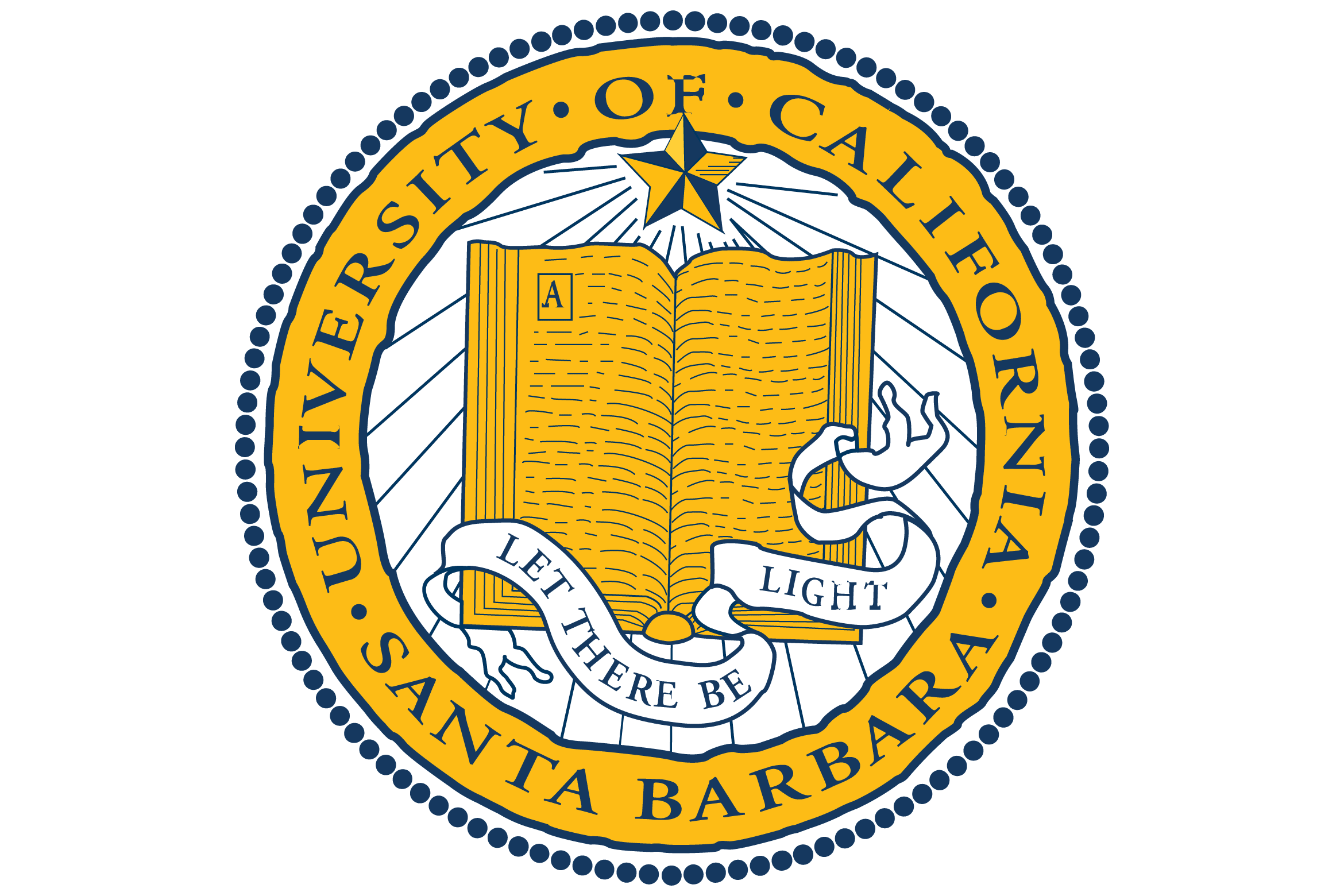Two index computations from the Donaldson–Segal program
Ákos Nagy
University of California, Santa Barbara

Joint with Saman Habibi Esfahani (Duke), Daniel Fadel (IMPA), Lorenzo Foscolo (UCL), & Gonçalo Oliveira (IST Lisbon)
Parts of this talk is based on 2009.06788 (joint with Fadel & Oliveira); to appear in the Memoirs of the AMS.
AMS Special Session on Gauge Theory, Geometric Analysis, and Low-Dimensional Topology
Saturday, April 1, 2023.
this presentation can be viewed at akosnagy.com/talks/G2-mono_AMS/G2-monopoles.html
$G_2$-manifolds
- $(X, \varphi)$
- $X$: smooth, oriented 7-manifold.
- Model for $\left( T_x X, \varphi_x \right)$: $\: \mathrm{Im} \left( \mathbb{O} \right) \cong \mathbb{R}^7$.
- Geometric PDEs: $\mathrm{d} \varphi = 0$ (linear) and $\mathrm{d} \ast_{g_\varphi} \varphi = 0$ (nonlinear).
- $\mathrm{Hol}^{g_\varphi} \leqslant G_2$.
- $(X, \varphi)$
- $X$: smooth, oriented 7-manifold.
- Model for $\left( T_x X, \varphi_x \right)$: $\: \mathrm{Im} \left( \mathbb{O} \right) \cong \mathbb{R}^7$.
- Geometric PDEs: $\mathrm{d} \varphi = 0$ (linear) and $\mathrm{d} \ast_{g_\varphi} \varphi = 0$ (nonlinear).
- $\mathrm{Hol}^{g_\varphi} \leqslant G_2$.
The Donaldson–Segal program
- Let $\psi := \ast_\varphi \varphi \in \Omega_X^4$, which is a calibration on $X$.
- $N^4 \subset X$ is a coassociative submanifold, if $N$ is $\psi$-calibrated, that is, $\psi|_N = \mathrm{vol}_N$.
- Donaldson–Segal: Potential invariants for $G_2$-manifolds by counting coassociatives. (Hard!)
- Conjecturally related (equivalent?) and potentially easier:"counting" $G_2$-monopoles, $(\nabla, \Phi)$.
- Intuitively, the correspondence between coassociatives and monopoles is similar to Taubes' "GR = SW" Theorem:$N \approx \Phi^{- 1} (0)$.
- In simple cases these objects can be computed and they agree (Oliveira JG&P '14).
- First step to prove more generally: analytic properties; e.g. asymptotics and Fredholm theory.
$G_2$-monopoles
- $\exists$ special Yang–Mills–Higgs fields, called $G_2$-monopoles: \begin{equation} \ast (F_\nabla \wedge \psi) = \nabla \Phi. \end{equation}
- $F_\nabla = F_\nabla^7 + F_\nabla^{14}$ ("vector" + "$\mathfrak{g}_2$").
- $\ast (F_\nabla \wedge \psi) \sim F_\nabla^7$.
- intermediate energy: \begin{align} E^\psi (\nabla, \Phi) &= \int\limits_X (|F_\nabla^7|^2 + |\nabla \Phi|^2) \mathrm{vol} \\ &= \underbrace{\int\limits_X (|\ast (F_\nabla \wedge \psi) - \nabla \Phi|^2) \mathrm{vol} + \mbox{boundary integral (topological)}}_{\mbox{Bogomolny trick}} \end{align}
Asymptotically conical $G_2$-manifolds
- $(X, \varphi)$ is asymptotically conical (AC).
- AC: there is a compact manifold-with-boundary $K^7 \subset X$, such that \begin{equation} (X - K, g_\varphi|_{X - K}) \sim ([R, \infty) \times \Sigma, \mathrm{d}r^2 + r^2 g_\Sigma). \end{equation}
- In particular: maximal volume growth (for a Ricci-flat manifold).
- Cheeger–Gromoll: $\Sigma$ has one component.
- $\Sigma$ is a nearly Kähler 6-manifold ($\omega \sim r^{- 2} \iota_{\partial_r} \varphi$ and $\nabla^{\mathrm{LC}} J$ is skew).
Previous Work (Fadel–N–Oliveira '20)
Under some mild hypotheses:
- $(\nabla, \Phi)|_{\Sigma_R} \rightarrow (\nabla^\infty, \Phi^\infty)$.
- $\underbrace{\Lambda F_{\nabla^\infty} = 0, F_\nabla^{0,2} = 0}_{\mbox{pseudo-Hermitian–Yang–Mills}}$ and $\underbrace{\nabla^\infty \Phi^\infty = 0}_{\mbox{reduction of the bundle to $L \oplus L^*$}}$.
- $E^\psi (\nabla, \Phi) = 4 \pi m \left\langle \: \alpha \cup \psi_\infty \: \middle| \: \left[ \Sigma \right] \: \right\rangle$, where $\alpha = c_1 (L)$ is the monopole class.
Corollaries: Finite mass, monopole class, decay for (co)kernel elements of the linearization, and Fredholm theory.
Bubbling
- Theorem (Fadel–Oliveira; Informal version):
As $m \rightarrow \infty$, the curvature concentrates around a coassociative ("monopole bubbling") and an associative ("instanton bubbling"). - Bubbling data:
- Coassociative, $N \subset X$,
- a Fueter section, $\Psi$, from $N$ into the BPS moduli,
- and a singular Dirac monopole, $\left( D, \phi \right)$, around $N$.
- "Callias index = gluing data index"
Theorem (Esfahani–Fadel–Foscolo–N–Oliveira): \begin{equation} \underbrace{\tfrac{1}{6} \alpha^3 \left[ \Sigma \right] - \tfrac{1}{24} \left( \alpha \cup p_1 \left( \Sigma \right) \right) \left[ \Sigma \right]}_{\mbox{AS on the boundary}} + \underbrace{\mathrm{def}_{\mathrm{weight}}}_{\mbox{zero via the main theorem}} = \underbrace{\left( b_0 \left( N \right) + b_2^+ \left( N \right) - b_1 \left( N \right) \right)}_{\mbox{Fueter}} - \underbrace{1}_{\mbox{gauging Dirac}}. \end{equation}
Future wish list
- Generalization to ALC $G_2$-manifolds (lots of examples by Foscolo).
- Generalization to other "ALX" $G_2$-manifolds; most of our work should generalize to nonparabolic manifolds.
- Calabi–Yau-monopoles and special Lagrangians.
- "Finiteness"/"Compactness"/Enumerative invariants.